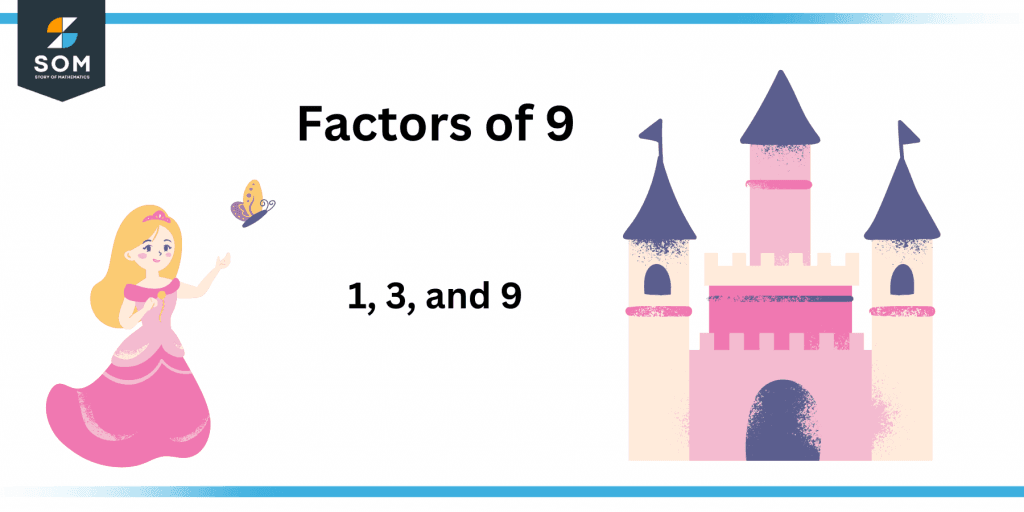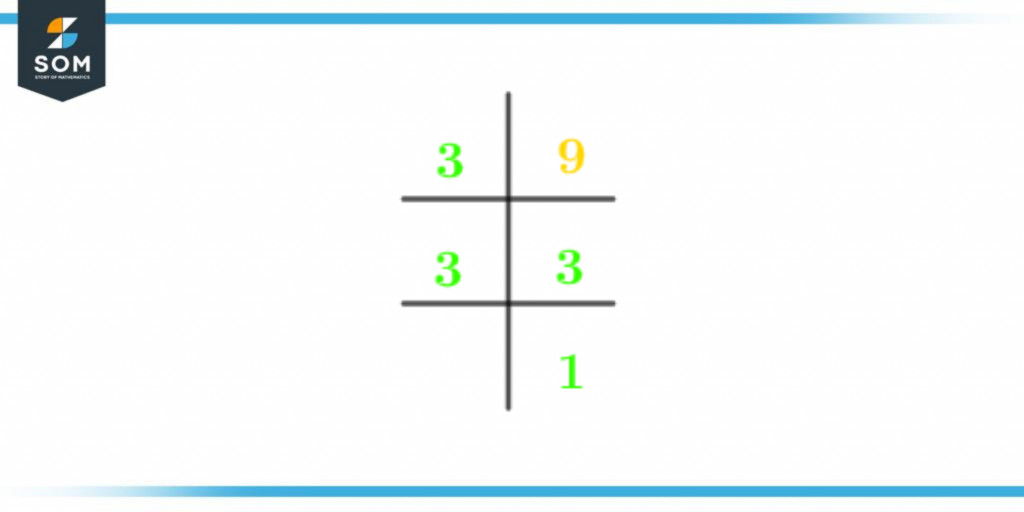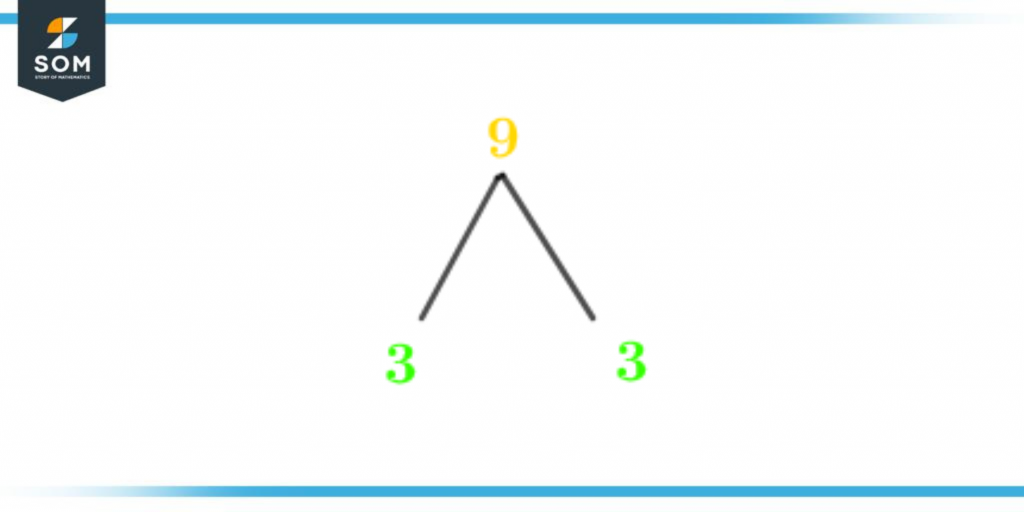JUMP TO TOPIC
Factors of 9: Prime Factorization, Methods, Tree, and Examples
Factors of 9 include numbers that evenly diffuse it without leaving any remainder. Factors are always in the form of whole numbers. Every number greater than one has two or more factors.
Figure 1 – All possible Factors of 9
- Division Method.
- Multiplication Method.
- Positive factors.
- Negative factors.
What Are the Factors of 9?
Factors of 9 include 1, 3, and 9 — all three numbers divide 9 evenly. Leave the remainder zero.9 has a total of six factors, which include both positive and negative factors. The number 9 is an odd composite number. A number having more than two factors is called a composite number.How To Calculate the Factors of 9?
You can calculate the factors of 9 by two diverse methods, one is the division method and the other one is the multiplication method.As the number 9 is not a prime number, there will be more than two factors of 9. Make a number line starting from 1 and ending on 9 because the factors of a number can’t be greater than the number.Finding factors of 9 by division method:One is a factor of every whole number because every number is completely divided by 1.\[ \frac{9}{1} = 9 \] (Positive Factor)\[ \frac{9}{-1} = -9 \] (Negative Factor)1 and -1 are factors of 9.Only even numbers are divisible by 2. As a result, 9 will not be divisible by 2\[ \frac{9}{2} = 4.5 \] When 9 is divided by 2 the answer is 4.5, which is not an integer. Factors can never be in the form of fractions or decimals. Hence, 2 is not a factor of 9.Let’s divide 9 by 3:\[ \frac{9}{3} = 3 \] (Positive Factor)\[ \frac{9}{-3} = -3 \] (Negative Factor)3 and -3 are factors of 9. Divide 9 by 7:\[ \frac{9}{7} = 1.2 \]Again the quotient is in decimal form, so 7 is also not a factor of 9.Divide 9 by 9:\[ \frac{9}{9} = 1 \] (Positive Factor)\[ \frac{9}{-9} = -1 \] (Negative Factor)Every number is a factor in itself. Every number divides itself evenly without leaving any remainder.9 and -9 are also the factors of 9.Positive factors of 9 = 1, 3, and 9.
Negative factors of 9 = -1, -3, and -9.
Finding factors of 9 by multiplication method:Positive Factors:1 x 9 = 9
3 x 3 = 9
By the above multiplication, we conclude that 1, 3, and 9 are factors of 9.Positive factors of 9 are 1, 3, and 9.Negative Factors:-1 x -9 = 9
-3 x -3 = 9
By looking at the above multiplication, write the negative factors list of 9.Negative factors of 9 are -1, -3, and -9.Factors of 9 by Prime Factorization
To find the Prime Factorization of 9, first, we have to find the prime factors from the list of factors of 9. What are the prime factors? Prime factors are factors that are prime numbers. They are only divisible by one and the number itself.Prime factorization is a mathematical technique through which we can represent a number in the form of the product of its prime factors. We can find prime factorizations by two methods:- Division Method.
- Factor Tree.

Figure 2 – Prime Factorization of 9
Factor Tree of 9
The factor tree is a technique for representing factors of a number in a pictorial representation, specifically the prime factors. It is known as a factor tree because it is like a tree having multiple branches connected to a common base. Construction of a factor tree:- The first step is to write the number at the top.
- Then draw two branches out of that number.
- Write the prime factors at those branches that divide 9 evenly.
- Continue the process of dividing until each branch ends up with the prime factors.

Figure 3 – Factor Tree of 9
Prime Factorization of 9: 3 x 3
Factors of 9 in Pairs
Writing a set of two factors from the factors list of 9. When these factors are multiplied gives a particular answer, which is equal to the original number. The multiplication method is used to find the factor pair of a number. A number can have more than one factor pair.1 x 9 = 9
1 and 9 are factor pairs of 9.3 x 3 = 9
3 and 3 are second-factor pairs of 9.Factor pairs can be positive and negative, but they can’t be in fractional form.The positive factor pairs of 9 are:(1, 9)
(3, 3)
Finding negative factors of 9 :-1 x -9 = 9
-3 x -3 = 9
The negative factor pairs of 9 are:(-1, -9)
(-3, -3)
Factors of 9 Solved Examples
Let’s solve some examples related to factors of 9 for a better understanding.Example 1
Find the average of factors of 9.Solution
Factors of 9 are: 1, 3, and 9The formula for calculating the average is:\[ \frac{\text{Sum of all entries}}{\text{Total number of entries}} = Average \]Sum of all factors of 9:Sum of all factors of 9:1 + 3 + 9 = 13
Since there are three factors of number 9 in total.Now let’s divide the sum of its factors by the total number of factors to determine the average.Therefore, the average is computed as:Average = 4.33Example 2
Jack has 15 red bottles, and Megan has 25 green bottles. They want to arrangethe bottles in such a sequence that each row contains an equal number of bottles, andeach row should have red bottles or green bottles. What is the greatestnumber of bottles that can be arranged in each row?Solution
Condition:The number of bottles should be equal in each row.Each row should have only one color of the bottle.Arrange the green and red bottles in an equal number of rows to find the largest common factor between 15 and 25.Find the factors of numbers 15 and 25:Factors of 15 = 1, 3, 5, 15
Factors of 25 = 1, 5, 25.
By the list of factors 15 and 25, now find the HCF.HCF of 15 and 25 = 5
5 is a common factor of 15 and 25.Each row will have 5 bottles Rows of red bottles: \[ \frac{15}{5} = 3 \]Rows of green bottles: \[ \frac{25}{5} = 5 \]Example 3
Sana wants to calculate the sum of all even factors of 9 and divide it by the sum of odd factors of 9.Solution
Factors of 9 are: 1, 3, and 9Finding the sum of even factors of 9\[ \frac{1}{2} = 0.5 \](Odd)
\[ \frac{3}{2} = 1.5 \](Odd)
\[ \frac{9}{2} = 4.5 \](Odd)
9 is an odd number, and factors of 9 are also odd. Sum of even factors of 9: 0 Finding the sum of odd factors of 9Odd factors are the numbers that can not be divided by 2.\[ \frac{1}{2} = 0.5 \]Therefore 1 is an odd factor.\[ \frac{3}{2} = 1.5 \]3 is also an odd factor.\[ \frac{9}{2} = 4.5 \]9 is also an odd factor.The sum of odd factors of 9:1 + 3 + 9 = 13
Now divide the sum of the even factor by the sum of odd factors to obtain the final answer. \[ \frac{0}{13} = 0 \]Images/mathematical drawings are created with GeoGebra.